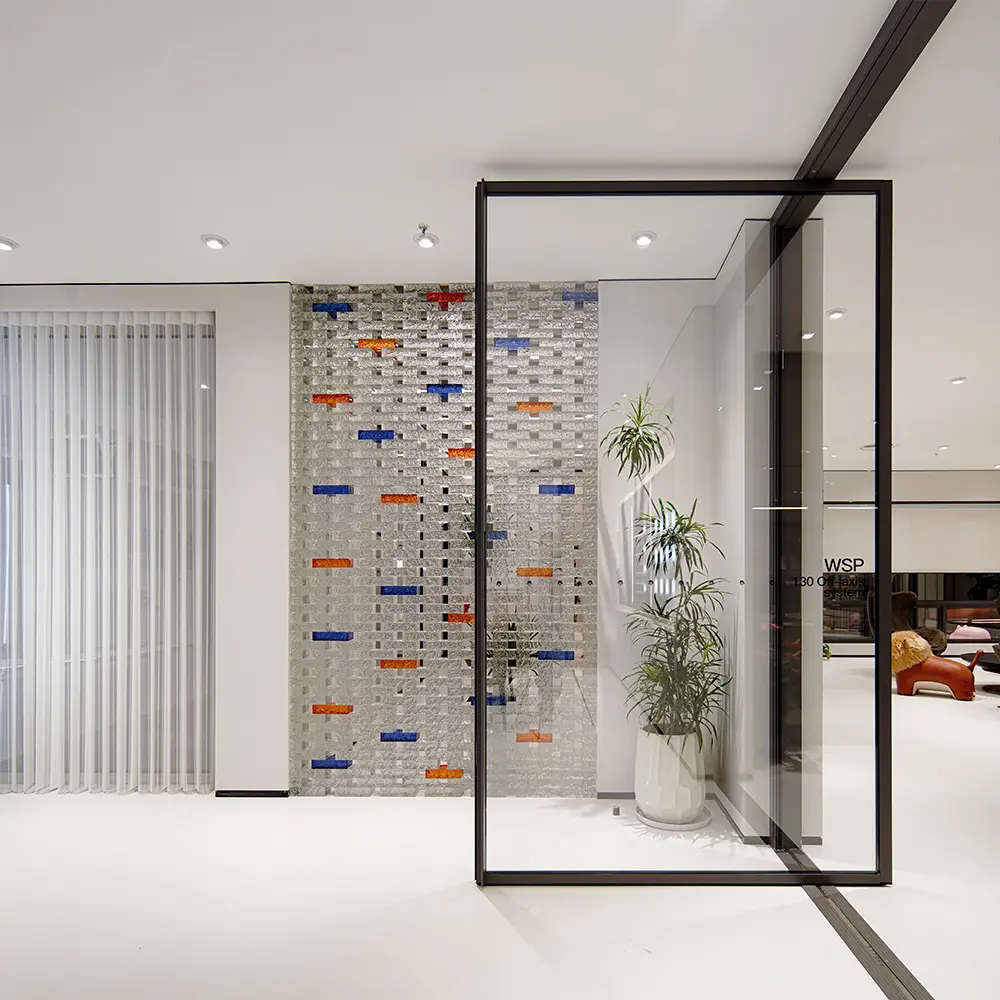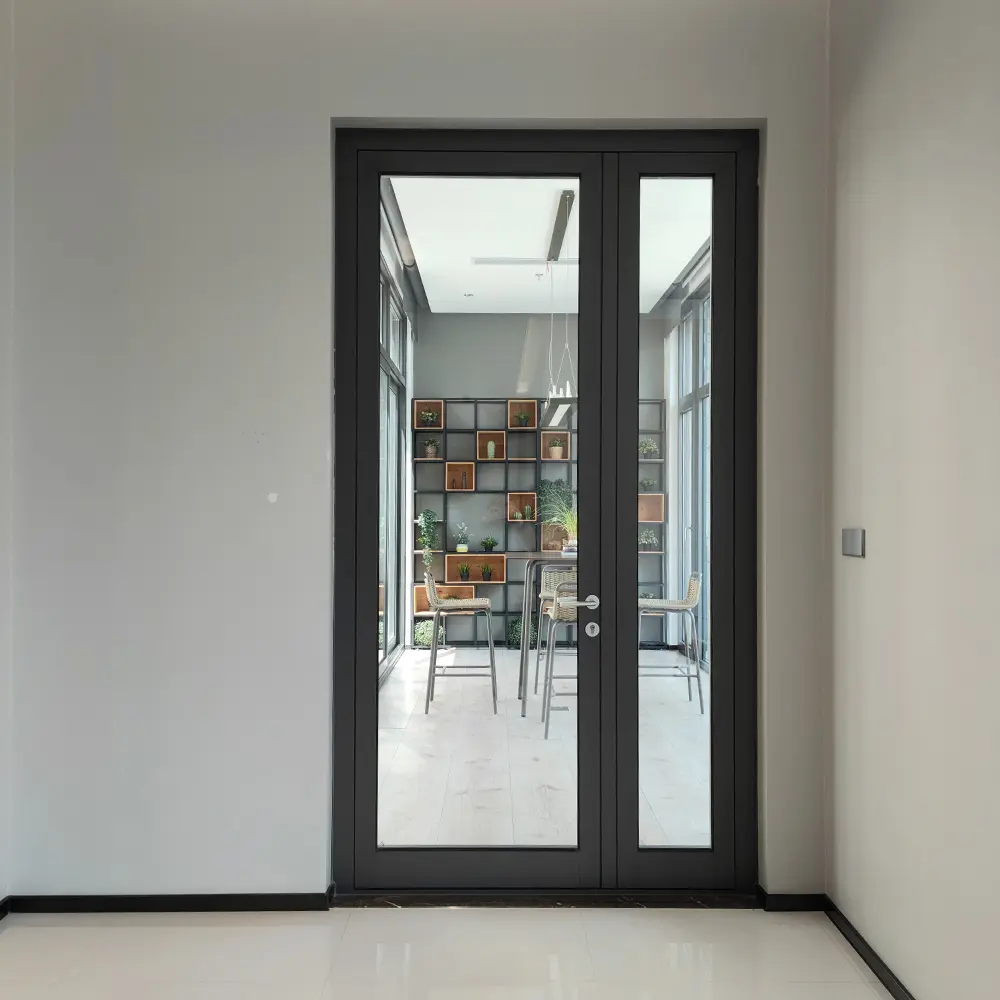First Impressions Begin at the Doorstep
The entrance of a building sets the tone for what lies beyond. Whether it's a home that reflects a personal sense of style or a commercial space that communicates professionalism and trust, the entrance door is more than just a functional barrier. It acts as a visual anchor, a security checkpoint, and a design statement. As the architectural language of buildings continues to evolve, the entrance door remains a pivotal feature that seamlessly blends aesthetics, functionality, and technology.
The Architectural Role of the Entrance Door
Defining the Building's Character
The entrance door significantly influences the overall perception of a building. For residential properties, it adds personality and charm, while for commercial spaces, it reinforces branding and design continuity. Material choices, color, scale, and design details all contribute to the visual identity that the entrance door helps establish. A well-designed entrance door can evoke feelings of warmth, security, and professionalism before one even steps inside.
Bridging Exterior and Interior Design
An effective entrance door functions as a transitional element between the outdoor environment and the indoor space. It aligns the architectural language of the building facade with the interior design theme. A coherent design between the exterior and the entrance door allows for a seamless flow of style, enhancing both curb appeal and internal harmony. This consistency is especially critical for luxury homes and high-end commercial establishments.
Key Materials for Long-Lasting Performance
Wood and Its Timeless Appeal
Wooden entrance doors have been favored for centuries due to their natural beauty and adaptability. They can be crafted into intricate designs and offer excellent insulation. High-quality hardwoods such as oak, mahogany, and walnut provide durability and elegance. When treated and sealed properly, wooden entrance doors can resist weathering and last for decades.
Metal for Modern Strength
Aluminum, stainless steel, and bronze are increasingly used in both residential and commercial entrance doors. These materials offer enhanced security, low maintenance, and a modern appearance. Metal entrance doors can be powder-coated or textured to suit various design aesthetics. Additionally, many metal options come with thermal breaks and insulation layers to improve energy efficiency.
Security Features That Matter
Locking Systems and Reinforcements
A great entrance door should offer more than just beauty—it must provide security. Advanced locking mechanisms, including multi-point locks, smart locks, and biometric access systems, are essential in modern door design. Reinforced cores, anti-pry strips, and impact-resistant glazing can enhance the door's resistance to forced entry.
Fire and Impact Ratings
Safety certifications and ratings ensure that entrance doors meet local building codes and industry standards. Fire-rated entrance doors can slow down the spread of flames and smoke in emergency situations. Impact-resistant doors, especially in storm-prone regions, protect against wind-borne debris and extreme weather conditions. These features are vital for ensuring the longevity and resilience of both residential and commercial properties.
Enhancing Energy Efficiency
Insulation and Thermal Performance
Entrance doors play a key role in a building’s thermal envelope. Insulated core materials, weather stripping, and quality seals reduce heat transfer and prevent drafts. This not only improves comfort but also reduces energy bills. High-performance entrance doors contribute to the overall sustainability of a structure.
Glazing Options and Light Control
Incorporating glass into an entrance door adds aesthetic value and allows natural light to enter. However, the type of glazing used matters. Double or triple-glazed glass with low-emissivity coatings provides insulation while reducing UV exposure and glare. For commercial spaces, frosted or tinted glass can offer privacy without compromising natural light.
Style and Customization Possibilities
Tailoring to Aesthetic Preferences
From minimalist to ornate, entrance doors come in a wide variety of styles. Custom carvings, paneling, color finishes, and hardware options offer the flexibility to match any architectural design. Personal touches, such as custom handles or unique glass inserts, can further enhance the distinctiveness of an entrance door.
Matching Surrounding Architecture
An entrance door should be contextually appropriate. For example, a rustic wooden door may suit a countryside home, while a sleek metal and glass door aligns better with a modern commercial building. Paying attention to the surrounding facade, landscaping, and material palette helps in selecting an entrance door that feels intentional and cohesive.
Accessibility and User Experience
Universal Design Principles
Accessibility is a crucial consideration in public and private spaces alike. Entrance doors should accommodate individuals of all abilities. Features such as low thresholds, wider doorways, and automatic opening systems make entrance doors inclusive and user-friendly. Lever handles and tactile signage are additional enhancements that contribute to universal design.
Ease of Use and Maintenance
Daily usability is just as important as long-term performance. Smooth operation, durable hinges, and easy-to-clean surfaces make entrance doors practical for everyday use. For commercial entrances, high-frequency usage demands robust materials and components that can withstand wear while remaining easy to maintain.
Technology Integration and Smart Features
Smart Locks and Entry Systems
Modern entrance doors often feature integrated technologies for enhanced security and convenience. Smart locks enable keyless entry via mobile apps, keypads, or biometric readers. Some systems allow remote access monitoring, adding an extra layer of control for homeowners and building managers.
Climate and Motion Sensors
Advanced entrance doors can also integrate with building management systems. Motion sensors can trigger lighting or security alarms. Climate sensors can adjust heating or cooling near the entrance zone. These features not only improve functionality but also contribute to energy efficiency and safety.
Environmental Responsibility and Certifications
Sustainable Material Choices
Eco-conscious design is increasingly influencing door manufacturing. FSC-certified wood, recycled metal, and low-VOC finishes are just some of the options available. Environmentally responsible entrance doors support sustainable building practices and appeal to green-conscious consumers.
Contribution to Green Building Standards
Entrance doors that meet energy efficiency and sustainability benchmarks can help buildings achieve LEED or other green certifications. Low-energy glazing, recyclable materials, and thermal insulation contribute to lower operational emissions and align with modern environmental targets.
Commercial vs. Residential Requirements
Differences in Function and Design
While both types of entrance doors serve similar purposes, their performance expectations can differ. Commercial entrance doors must comply with stricter fire, accessibility, and safety standards due to higher occupancy rates. They often incorporate automated opening systems and high-durability finishes to handle increased foot traffic.
Balancing Security with Aesthetic Appeal
In both settings, achieving a balance between appearance and performance is crucial. A secure but unattractive entrance door may deter users, while a visually striking but insecure door poses safety risks. Successful designs consider both practical needs and design aspirations equally.

Choosing the Right Manufacturer and Installer
Quality Assurance and Craftsmanship
The reliability of an entrance door depends greatly on the manufacturer’s expertise. High-quality fabrication processes, material sourcing, and attention to detail ensure that the entrance door performs as expected. Manufacturers who offer warranties and testing documentation provide added peace of mind.
Importance of Professional Installation
Even the best entrance door will underperform if poorly installed. Precision during installation affects everything from energy performance to weather resistance and security. Partnering with experienced installers helps ensure that the entrance door fits perfectly and functions smoothly from day one.
FAQ
What materials are best for an entrance door?
Wood, metal, and composite materials are commonly used. The best material depends on factors like design preference, climate, and security needs.
How can I make my entrance door more secure?
You can upgrade locks to smart systems, use reinforced frames, and choose impact-resistant glazing to improve security.
Are glass entrance doors energy efficient?
Yes, when equipped with insulated, low-E, or double-glazed glass, entrance doors with glass elements can be both stylish and energy efficient.
Can entrance doors be customized?
Absolutely. From size and material to color, glazing, and hardware, entrance doors can be tailored to meet both aesthetic and functional requirements.
Table of Contents
- First Impressions Begin at the Doorstep
- The Architectural Role of the Entrance Door
- Key Materials for Long-Lasting Performance
- Security Features That Matter
- Enhancing Energy Efficiency
- Style and Customization Possibilities
- Accessibility and User Experience
- Technology Integration and Smart Features
- Environmental Responsibility and Certifications
- Commercial vs. Residential Requirements
- Choosing the Right Manufacturer and Installer
- FAQ

